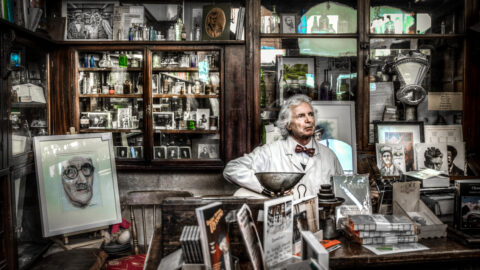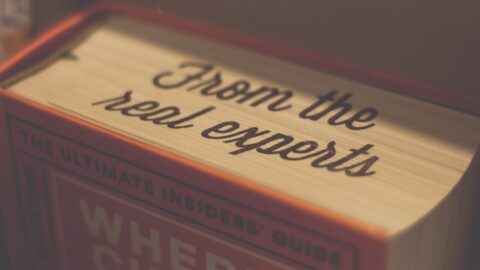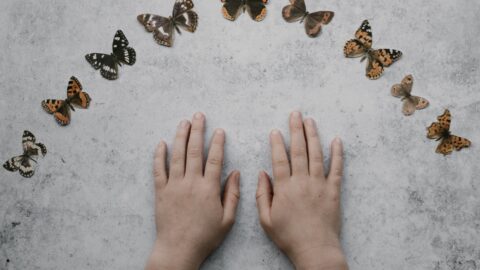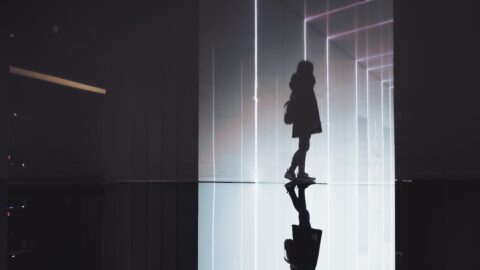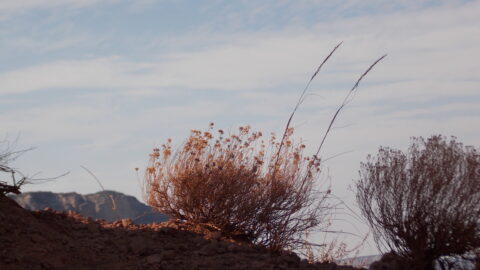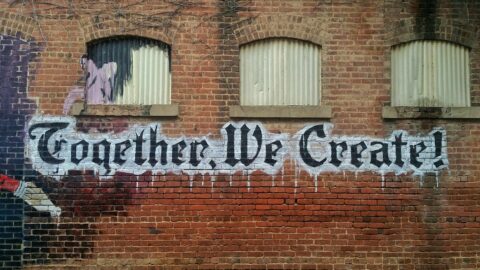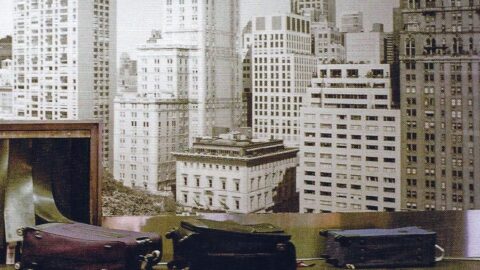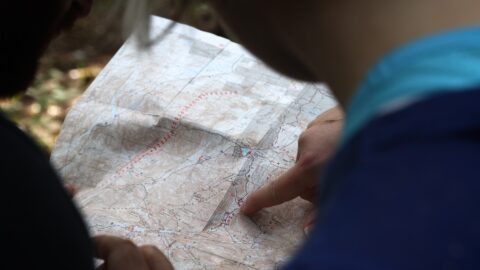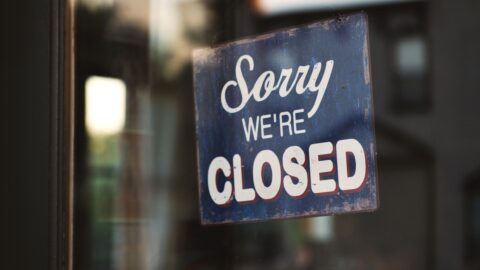Jackson Ellis describes a tender, thought-provoking family legacy in “Lords of St. Thomas” (Green Writers Press, coming to paperback April 2018). The reader gets an account of the fictional Henry Lord and his family in St. Thomas, Nevada. Here the Lords struggle with family bonds, tragedy and fear of the inevitable. The book is also an important record of history, depicting the consequences of the building of the Hoover Dam in the 1930s.
“Portrait of a Body in Wreckages”: An Interview with Meghan McClure
It is a body, wrecked and then stitched together with words. Feel free to disassemble it, rearrange it, make it yours. – “Portrait of a Body in Wreckages”
“Portrait of a Body in Wreckages” is much more than a silhouette of it’s author, more than the form and parts of a human specimen. It’s a graceful dissection of the experience of a body in the world. Winner of Newfound’s 2017 Prose Prize, Meghan McClure’s fragmented essay is a collection of autobiographical vignettes that offers readers intimate rumination, allowing us to feel our own bodily landmarks and signposts through its careful illumination of how the physical intertwines with the rest.
It’s a well-balanced piece; the meta sections are visceral and grounded in the sensory, but the anecdotal sections are especially powerful. It’s a chapbook in which you can easily be absorbed.
I had the honor of probing deeper into the chapbook and it’s author:
Delaney Kochan: “Portrait of a Body in Wreckages” is broken into four sections that appeared to me as two relationships between seemingly opposite ideas: place and white space or potential; communion and isolation in the body. How did the manuscript divide into these sections?
Meghan McClure: After a couple years of collecting the fragments and research that make up this book I started to see some threads running through, so I sort of teased them apart and grouped them to find the commonalities. Of course, these things are at the ends of a continuum and can overlap, but it was a way of sorting what felt chaotic to me. I find comfort in organizing things and writing is no different – it helped the enormity of writing about the body feel a little more manageable. Isn’t that what we do when we write? Try to boil it down?
James Joyce and the City of Dublin
There are two ways a writer can become synonymous with their city. (There are probably quite a few, but for the purposes of this post, there are two.)
One is to be so successful and/or talented, capturing your country’s truth with such style, that you make the city famous through the public’s interest in your life.
The second is to be from a city so small that they don’t have much choice but to invest in your name.
I think there is an element of both when it comes to James Joyce and Dublin.
Managing Time: Make the Most of It
Society grinds along by those who sacrifice themselves to the screaming of alarms, the constriction of schedules, the anxiety of due dates and deadlines, and the mocking tick of clocks. Time passes as humans rush through moments that will never again exist in the past, present, and futures we base our lives upon—entirely for a paycheck.
Teaching and Learning Empathy
We all have that one teacher who played a strong role in our life. Maybe some of us had more than one—I was lucky to have a few. The ones who encouraged my creativity. There was one who helped break my public thumbsucking habit. (Thanks a lot, Ms. Loftstrum.)
The one who sticks out the most is someone who I had my senior year of high school, and it wasn’t the thumbsucking habit-breaker. Everyone who went to my Catholic high school had him senior year. It was technically called Morality.
OK, Google: What’s an “expert”?
You’ll find them in the court room, on TV, in magazines, and more often than not, on the receiving end of your (hefty) check. Some of them are pressed and polished, presenting a perfect picture of professionalism achieved only by those willing to spend the time, while others might be mistaken for an eccentric vagabond, mysterious and yet intriguing in their strange ways.
Did you say “experts”?
Yes, that’s who I’m talking about.
The Highs and Lows of Daily Life: Artist Interview with Sarah E. Swist and Kevin R. Mercer
Artists Sarah E. Swist and Kevin R. Mercer collaborate on the mixed-media project Bubblegum & Whiskey, featuring fragments from their lives and skills they’ve picked up throughout moves through different rural American communities. The slices of life collected in Bubblegum & Whiskey are always fresh and eye-catching. An interview with the artists follows.
Check out Bubblegum & Whiskey in the current issue of Newfound.
Laura Eppinger: First of all, I am enchanted and impressed by the range of materials and objects you incorporate. Woodwork! Embroidery! Metal! Paint! How do you decide what materials to use? Which artist brings which expertise to a piece?
Sarah E. Swist and Kevin R. Mercer: We’re glad you enjoy the wide variety of materials! We definitely want to explore as many methods of creation as possible. Our formal art studies were technically in the areas of drawing and painting. We created this project knowing it would be based in mixed-media.
No Need to Fear Virginia Woolf
Ever had an existential crisis? Even William Shakespeare’s Macbeth spoke about one fundamental truth within the fifth act of the play: People wake up, live their lives, and then repeat this cycle until life ultimately ends.
The cyclical nature life is one of the major themes of Michael Cunningham’s Pulitzer Prize-winning novel “The Hours,” a profoundly beautiful tour de force that led to the Academy Award-winning film adaptation in 2002. Cunningham successfully explores fundamental themes while also making Virginia Woolf a very real person instead of a literary enigma. Woolf might have suffered from mental illness and tragically committed suicide in 1941, but she will remain one of the greatest authors of all time.
For (Lack of) Health Care
The new year brings a lot of new things, and as we come to the close the first month, it’s hard to believe that in just 21 days, you could have formed any number of new habits, simply by repeating them each and every day.
So, how did you use your first few days of the new year?
A Butterfly in the Terezin Ghetto
Inspiration comes to us in countless forms, some dark and disturbing, others beautiful and radiant. And sometimes in a profound combination of darkness and light, as in the case of the Terezin ghetto.
The town of Terezin is located about an hour from Prague, in the Czech countryside. It is a garrison town, a fortress rising above picturesque hills and verdant fields, built by Emperor Joseph II in honor of his mother, the Empress Maria Theresa. During World War II, the Nazis occupied the town, evicted the inhabitants, and converted it into a ghetto and concentration camp they called Theresienstadt.
“The Twilight Zone” taught me everything I need to know about horror
The human reaction to the genre horror has long fascinated me. It’s inspired psychological and philosophical positions: Why do we watch things that scare us?
It’s hard for me to write about horror without drawing from deeply personal childhood experiences with classic TV and film. When I was 10 years old, the 1962 episode of “The Twilight Zone” called To Serve Man played on my family TV. My father cheered! I had to watch this! (He also recommended I read Bram Stoker’s “Dracula” in high school, as the scariest book he’d ever read. AGREED.)
Desert Photographs and Facts
2017 has not been a kind year for many in the United States, and beyond. It’s painful to look back at what we’ve been through and intimidating to stare down all the work that awaits us in 2018. But if the work is worthy, we’ll find a way to get it done as best we can.
Tomorrow is a holiday. If you can, take a break.
I hope that you care for yourself today. You need your strength. I hope that you get involved in activism and advocacy. We need your voice. I hope that you prioritize your writing or other creative output in 2018. We need your work.
I hope that you take a breath. This post will likely take you less than five minutes to read. Breathing is encouraged while you scroll through it.
The rest of this space will be filled with photographs from various hiking trails in Arizona alongside facts about the peoples and ecosystems of this region. Please enjoy this, if you can spare the time:
Running Workshops Has Given More Than Constructive Criticisms
Since July 2017 I’ve been fortunate enough to work with three helpful and flexible public libraries in New Jersey to run writing workshops. I approached my local library in June because I realized that my area needed more events to allow writers to share their work and have constructive criticisms to expand previously written works.
Months later, I realized I received more than I expected.
“Cryptopedia” – An Interview with Andrew Demcak
Andrew Demcak’s “Cryptopedia” is a collection that lives up to the mystery and intrigue promised by its title. “Cryptopedia” succeeds with that most fundamental and pleasing of poetic ideas: finding harmony between form and content. The 2017 Anzaldúa Poetry Prize finalist is a poet, a novelist, and, as he says, a “content creator in various forms.”
Demcak is a Renaissance man who works in unusual ways, cutting up blocks of text from a variety of sources and rearranging them, to create his poems. In “Cryptopedia” he mixes this method with the murky, monstrous and mysterious to create something unsettling yet genuinely moving and thought-provoking. Demcak’s success comes from his pitch-perfect subject choices and his ability to turn a seemingly random selection of lines and quotes into a twisting narrative, a short, emotive gut-punch. It takes talent to write poetry, but Demcak has proved he is not only a great talent, but a true craftsman.
Demcak’s poetry has appeared in a range of journals and we were lucky enough to have him share his craft, as well as some words of wisdom, with us at Newfound.
Teju Cole challenges us to locate our own “Blind Spot”
It is early December and daylight hours are so short that I worry I am forgetting what colors truly look like. My eyes are ever tired. I am weary. It happens every year around this time and I feel worn-out until spring arrives.
This week I found an antidote in photography-prose hybrid Blind Spot by Teju Cole (Random House, 2017).
A gorgeous collection of color photography and evocative text, Blind Spot shook me awake from dormancy. Each photo is titled with the location it was taken, featuring datelines like Venice, London, Lagos and Beirut. The accompanying text sometimes introduces the picture or refers to previous shots. Other times, the text muses on a philosophical idea, classical painting, or bit of music where the reader is left to connect the words to the image. (I was pleased to learn that Cole is a fan of both Bjork and Beck, among others.)
The Write Word
If you could create a world, how would you make it? What would you fill it with?
What are your dreams?
Yanagihara’s A Little Life and impulse control
I stared at the words in front of me, elegant while they concluded a chapter with devastating news. “No!” I said aloud, though I was in public. The coffee shop buzzed with life but I sat alone, with only a cooling latte to comfort me.
The sad news from the novel hit me all over again. My eyes stung and I let the tears fall. So what if I was surrounded by people—no one was really looking at me, right?
And then I felt a hand on my back. Two women—strangers—approached me and said they recognized the cover of the book and couldn’t help but peek at the chapter I was on. When they saw where I was in the story, they stayed close, knowing I was about to get my heart broken.
I could hardly speak. I tried to laugh but I was still crying: Why am I reading this book at all? What a silly way to spend a vacation!
The strangers comforted me: We read it because it was good. We kept going because it took over our minds and we didn’t want to do anything else. They both recounted stories of crying in restaurants or in plane seats because of this book. They told me I should take a walk, that getting air would help.
I’d never read a novel that created an extemporaneous support group before (though Push by Sapphire comes close). What the heck was happening to me?
On Adoption
November is national adoption month. Like millions of others, adoption has had a positive effect on my life.
When I was 11 years old, adoption brought one of the most important people in my life to me: my cousin. She is the closest person I have to a younger sister. I watched her grow up, from pushing her in a carriage and changing her diapers to hearing about college, grades and prom.
[Lukao] by Craig Santos Perez: The Birth and Life of an Island
Right from the get-go, Craig Santos Perez lets the reader know that the space they enter is a personal one. Poetry collection [Lukao] (Omnidawn, 2017) is laden with natural beauty, heartfelt stories and sincere love. It also reveals the everyday truth behind the island of Guam and, indeed, the world at large.
Before we even reach the poetry, the collection offers what Perez calls a “poemap,” a picture outlining Guam’s cable network. The small island is crisscrossed with black lines which, according to Perez, “carry almost all transpacific Internet traffic.” Guam is a hub, interconnecting the USA with other continents. It’s a striking image to begin a book of poetry with, not least because of its utilitarianism. Guam is a tool for the United States, the reader sees, introducing the expectation of seeing the life and love breathing between those cables. Or struggling between them.
No More Letters
Let’s say that in the next few years, either post offices or libraries will close. It will be one or the other (or perhaps both). Which could you live without? And which one would have the most impact when it’s gone?
Freed From Writer’s Block
It wasn’t until I found myself drunk at 2 a.m. sitting down—pants wrapped around my ankles—peeing between the spaces in the metal bars that made up the foundation of a cold black bench next to an old friend from high school I hadn’t seen in four years, that I realized I was free from Writer’s Block.



